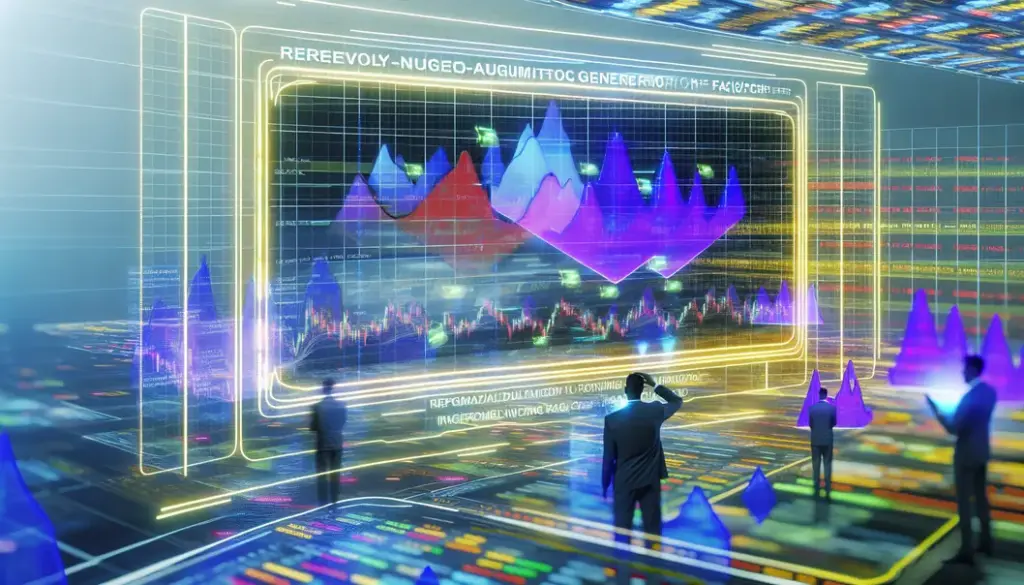Retrieval-Augmented Generation redefines real-time data access for trading, bridging innovation with market needs through enhanced AI capabilities.
Harnessing the Power and Tackling the Challenges of RAG: Beyond Conventional AI Boundaries

Retrieval-Augmented Generation (RAG) represents a significant leap forward in the capabilities of large language models (LLMs) by integrating real-time data retrieval to elevate their knowledge and response accuracy. At the heart of RAG’s transformative potential lies its diverse applications across various sectors, each benefitting from its ability to incorporate fresh, contextually relevant data.
In the healthcare sector, RAG provides a pivotal advantage by retrieving the latest research papers, treatment protocols, and drug database updates. These capabilities empower healthcare professionals to diagnose more accurately and offer personalized care based on the most current information. For instance, incorporating new medical studies into a practitioner’s query can lead to more informed treatment decisions, enhancing patient outcomes.
Similarly, in legal services, RAG facilitates swift access to the most recent case law and statutes. Legal professionals can rely on this dynamic system to draft precise contracts or provide accurate legal advice, avoiding the pitfalls of relying on outdated precedents. This real-time data retrieval supports attorneys in delivering more effective legal services, significantly reducing research time.
In the world of finance, where decisions must often be made rapidly, RAG proves invaluable. Its ability to analyze real-time transaction data supports fraud detection efforts and market trend analysis. Financial analysts can leverage these insights to offer more sound investment advice or detect fraudulent activities more quickly, thus safeguarding assets more effectively.
RAG also plays an essential role in enterprise knowledge management. Within customer support, for example, it generates responses by utilizing internal documentation such as product manuals and FAQs. This enables customer service agents to troubleshoot issues promptly and accurately. Similarly, in enhancing internal workplace efficiencies, RAG streamlines access to critical documents like HR policies and compliance guidelines, ensuring employees have the information necessary to perform their duties efficiently.
The field of education and research benefits enormously from RAG’s capabilities. By tailoring explanations to users with up-to-date academic resources, it promotes personalized learning experiences. For researchers, RAG’s ability to aggregate recent publications and datasets proves invaluable for synthesizing comprehensive literature reviews or forming innovative hypotheses.
Moreover, RAG empowers real-time decision-making in dynamic environments. It integrates live data streams—such as those from IoT sensors or news feeds—to optimize logistics and crisis management efforts. Content creators, too, can leverage RAG to draft insightful reports using the latest industry trends, retrieved efficiently from proprietary databases.
However, the innovative promise of RAG is accompanied by its own set of limitations. Chief among these is the data quality and relevance challenge. Reliance on outdated information can lead to misinformed conclusions, such as citing obsolete legal precedents or misinterpreting correctly retrieved data—imagine an AI mistakenly labeling a well-known political figure with incorrect attributes due to a lack of current data checks.
RAG also poses security and privacy risks. Integrating external data sources raises concerns about sensitive information exposure, especially in high-stakes fields like healthcare and finance. For example, lax controls during data retrieval can inadvertently allow patient records to leak through insecure APIs, violating compliance standards.
Overall, while RAG stands as a beacon of advanced technological capability, its applications and limitations must be carefully managed to maximize the benefits. The ongoing development of solutions to address these challenges will be crucial in harnessing the full potential of RAG in revolutionizing AI-driven insights across sectors.
Harnessing the Power and Tackling the Challenges of RAG: Beyond Conventional AI Boundaries

Retrieval-Augmented Generation (RAG) represents a significant leap forward in the capabilities of large language models (LLMs) by integrating real-time data retrieval to elevate their knowledge and response accuracy. At the heart of RAG’s transformative potential lies its diverse applications across various sectors, each benefitting from its ability to incorporate fresh, contextually relevant data.
In the healthcare sector, RAG provides a pivotal advantage by retrieving the latest research papers, treatment protocols, and drug database updates. These capabilities empower healthcare professionals to diagnose more accurately and offer personalized care based on the most current information. For instance, incorporating new medical studies into a practitioner’s query can lead to more informed treatment decisions, enhancing patient outcomes.
Similarly, in legal services, RAG facilitates swift access to the most recent case law and statutes. Legal professionals can rely on this dynamic system to draft precise contracts or provide accurate legal advice, avoiding the pitfalls of relying on outdated precedents. This real-time data retrieval supports attorneys in delivering more effective legal services, significantly reducing research time.
In the world of finance, where decisions must often be made rapidly, RAG proves invaluable. Its ability to analyze real-time transaction data supports fraud detection efforts and market trend analysis. Financial analysts can leverage these insights to offer more sound investment advice or detect fraudulent activities more quickly, thus safeguarding assets more effectively.
RAG also plays an essential role in enterprise knowledge management. Within customer support, for example, it generates responses by utilizing internal documentation such as product manuals and FAQs. This enables customer service agents to troubleshoot issues promptly and accurately. Similarly, in enhancing internal workplace efficiencies, RAG streamlines access to critical documents like HR policies and compliance guidelines, ensuring employees have the information necessary to perform their duties efficiently.
The field of education and research benefits enormously from RAG’s capabilities. By tailoring explanations to users with up-to-date academic resources, it promotes personalized learning experiences. For researchers, RAG’s ability to aggregate recent publications and datasets proves invaluable for synthesizing comprehensive literature reviews or forming innovative hypotheses.
Moreover, RAG empowers real-time decision-making in dynamic environments. It integrates live data streams—such as those from IoT sensors or news feeds—to optimize logistics and crisis management efforts. Content creators, too, can leverage RAG to draft insightful reports using the latest industry trends, retrieved efficiently from proprietary databases.
However, the innovative promise of RAG is accompanied by its own set of limitations. Chief among these is the data quality and relevance challenge. Reliance on outdated information can lead to misinformed conclusions, such as citing obsolete legal precedents or misinterpreting correctly retrieved data—imagine an AI mistakenly labeling a well-known political figure with incorrect attributes due to a lack of current data checks.
RAG also poses security and privacy risks. Integrating external data sources raises concerns about sensitive information exposure, especially in high-stakes fields like healthcare and finance. For example, lax controls during data retrieval can inadvertently allow patient records to leak through insecure APIs, violating compliance standards.
Overall, while RAG stands as a beacon of advanced technological capability, its applications and limitations must be carefully managed to maximize the benefits. The ongoing development of solutions to address these challenges will be crucial in harnessing the full potential of RAG in revolutionizing AI-driven insights across sectors.
Final thoughts
RAG revolutionizes market interactions, transforming how traders and investors access and leverage real-time data for strategic decisions.
Ready to elevate your business with cutting-edge automation? Contact Minh Duc TV today and let our expert team guide you to streamlined success with n8n and AI-driven solutions!



